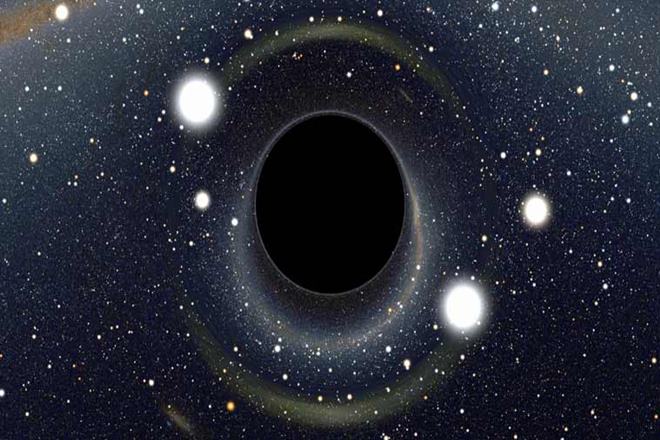London: In a historic feat, astronomers announced on Wednesday that they have captured the first-ever image of a black hole in a distant galaxy — the biggest tribute to the late Stephen Hawking who theorised about the existence of black holes emitting radiation in the universe.
The image — taken by a network of eight telescopes across the world — shows luminous gas swirling around a supermassive black hole at the centre of “Messier 87”, a massive galaxy in the nearby Virgo galaxy cluster, the European Southern Observatory (ESO) said in a statement.
Described by the scientists as “a monster”, the black hole resides 55 million light years from Earth and has a mass 6.5 billion times that of the Sun.
The team of scientists took almost 12 years to capture the image of a black hole.
“We have taken the first picture of a black hole. This is an extraordinary scientific feat accomplished by a team of more than 200 researchers,” said Sheperd S. Doeleman from the Center for Astrophysics at Harvard and Smithsonian and Event Horizon Telescope (EHT) Project Director.
The EHT is a global network of radio telescopes that work together as one virtual, Earth-sized telescope, with a resolution sharp enough to “see” a black hole’s shadow.
The breakthrough was announced in a series of six papers published in a special issue of The Astrophysical Journal Letters.
Black holes are extraordinary cosmic objects with enormous masses but extremely compact sizes.
The presence of these objects affects their environment in extreme ways, warping spacetime and superheating any surrounding material.
“If immersed in a bright region, like a disc of glowing gas, we expect a black hole to create a dark region similar to a shadow – something predicted by Einstein’s general relativity that we’ve never seen before,” explained Heino Falcke of Radboud University, the Netherlands.
The space-time phenomenon was theorised by Einstein more than a century ago and later by British theoretical physicist Hawking who died last year.
His theoretical prediction was that black holes emit radiation, often called Hawking radiation.
Multiple calibration and imaging methods revealed a ring-like structure with a dark central region — the black hole’s shadow — that persisted over multiple independent EHT observations.
According to the EHT, the black hole’s boundary — the event horizon from which the EHT takes its name — is around 2.5 times smaller than the shadow it casts and measures just under 40 billion km across.
“The confrontation of theory with observations is always a dramatic moment for a theorist. It was a relief and a source of pride to realise that the observations matched our predictions so well,” elaborated EHT Board member Luciano Rezzolla of Goethe Universit�t, Germany.
“We have achieved something presumed to be impossible just a generation ago. We have taken a picture of a black hole,” noted Doeleman.
[source_without_link]IANS[/source_without_link]

